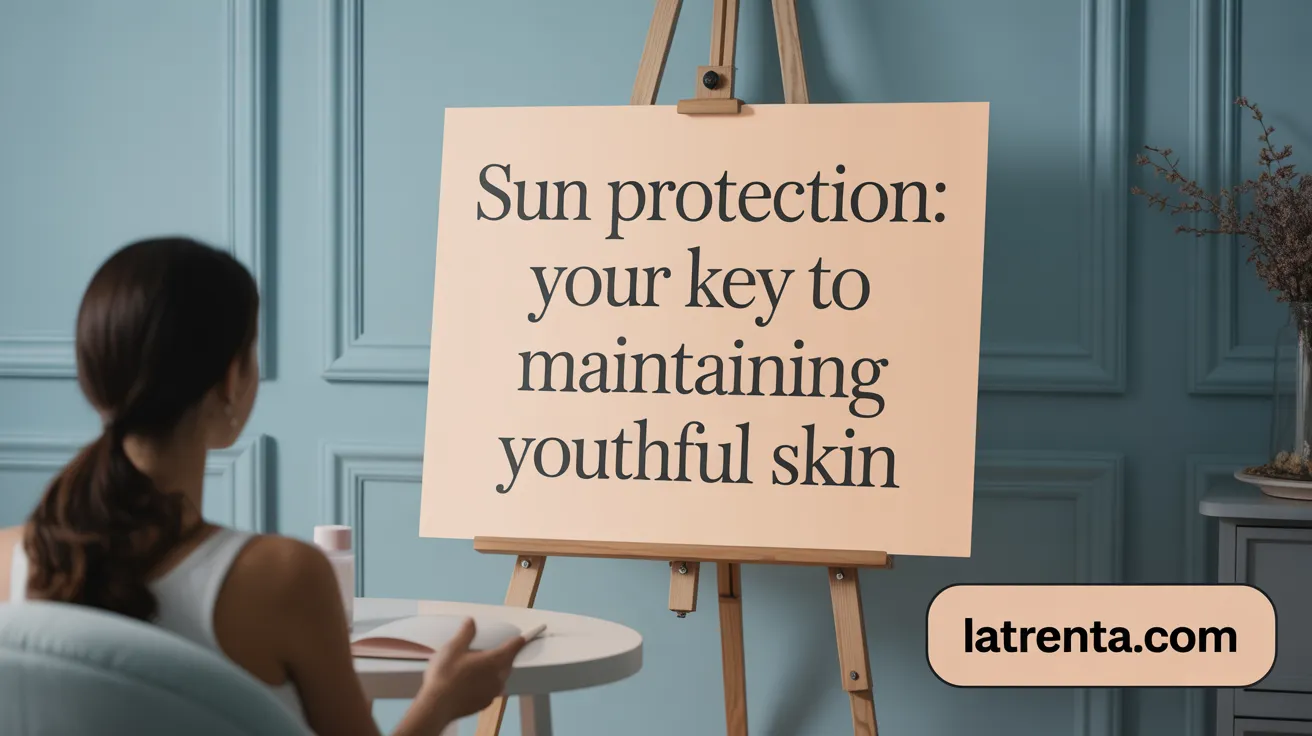Unlocking the Secrets to a Revitalized Appearance
Maintaining a youthful and fresh look involves more than just temporary fixes; it requires a comprehensive approach that combines expert skincare, lifestyle adjustments, and sometimes professional treatments. Understanding the aging process and adopting proven facial refinement tips can significantly enhance skin health, texture, and appearance. This article explores effective strategies to refine your facial aesthetics gracefully, helping restore vibrancy and confidence at any age.
Understanding Facial Aging: What Happens Beneath the Surface
What causes visible signs of aging on the face?
Visible aging signs arise from two main processes: intrinsic aging and extrinsic aging. Intrinsic aging is a natural, genetically driven progression causing skin to thin, develop lines, and become dry. Extrinsic aging results from environmental and lifestyle influences such as sun exposure and skin aging and smoking and skin aging, which accelerate these effects. Underneath, structural shifts occur including the loss and repositioning of facial fat, leading to sagging skin, hollow cheeks, and jowly neck areas. Additionally, declines in collagen and elastin proteins weaken skin firmness, resulting in wrinkles and sagging.
How do facial muscles and expressions contribute to aging?
Facial muscles play a significant role; repetitive movements create permanent wrinkles known as deep expression lines. These form as the skin folds repeatedly and the muscle activity imprints lines over time. Finer wrinkles also develop from other factors like sun damage and gradual skin degeneration. Thus, habitual facial expressions combined with skin changes contribute to visible signs of aging.
Understanding intrinsic vs extrinsic aging and collagen changes
Intrinsic aging encompasses genetics and natural biological changes, while extrinsic aging involves external factors accelerating deterioration. Both reduce collagen and elastin—the vital proteins responsible for skin’s elasticity and strength. Their loss diminishes skin’s ability to snap back, leading to sagging and wrinkles.
Structural changes behind the scenes
Aside from surface wrinkles, aging involves deeper facial structure alterations. Retreated hairlines, cartilage growth causing enlarged ears, and drooping nasal tips reflect connective tissue weakening over time. Fat loss and redistribution also alter facial contour, emphasizing age-related changes beyond the skin's surface (source).
Sun Protection: The Cornerstone of Youthful Skin

Why is sun protection important for a youthful appearance?
Sun exposure is the leading cause of visible aging on the face, accounting for about 80% of signs such as wrinkles, age spots, sagging, and uneven skin tone. Ultraviolet (UV) rays break down collagen and elastin fibers in the skin, which are crucial for maintaining firmness and elasticity. This damage not only accelerates reduce premature skin aging but also increases the risk of skin cancer.
To shield your skin, applying a broad-spectrum sunscreen with an SPF of 30 or higher every day, even on cloudy days, is critical. Complement sunscreen use by seeking shade during peak sunlight hours, typically between 10 a.m. and 4 p.m., and wearing protective clothing like long-sleeved shirts, wide-brimmed hats, and UV-blocking fabrics. These combined strategies help prevent collagen breakdown, preserving the skin's youthful appearance.
What alternatives exist to harmful tanning methods?
Tanning through sun exposure or indoor beds exposes the skin to harmful UV rays that accelerate skin aging by promoting wrinkles and dull complexion, while also raising skin cancer risk. A safer choice is to avoid tanning beds.
Self-tanners offer a harmless way to achieve a bronzed look without exposure to damaging UV radiation. These products provide a tanned appearance by coloring the skin’s surface temporarily and do not cause collagen damage or increase cancer risks. Adopting self-tanners can help maintain youthful, healthier skin while still enjoying the aesthetic appeal of a sun-kissed glow.
Establishing an Effective Skincare Routine: Cleanse, Treat, and Moisturize
What constitutes a good daily facial skincare routine?
A good daily facial skincare routine starts with gentle cleansing twice a day—morning and evening. Using a mild, non-irritating cleanser removes dirt, makeup, and pollutants while protecting the skin barrier. Applying products from the lightest to the heaviest helps maximize their absorption and effectiveness.
Following cleansing, a moisturizer is essential to trap water in the skin. This step maintains hydration, keeps the skin plump, and reduces fine lines. Ideally, choose a moisturizer suitable for your skin type and one containing ingredients like hyaluronic acid for enhanced moisture retention.
Incorporate a vitamin C serum in the morning to protect against environmental damage, boost collagen production, and brighten the skin tone. At night, applying a retinol product encourages skin cell turnover, helps fade pigmentation, and smoothes fine lines for a youthful appearance. Both vitamin C and retinol should be tailored to your skin’s sensitivity and usage introduced gradually.
How should one avoid skin irritation from skincare products?
Avoid skincare products that cause stinging or burning sensations, as these irritate the skin and can hasten signs of aging. If irritation happens, stop using the product immediately and consult a dermatologist to find alternatives.
When introducing potent ingredients like retinol, start slowly—using it a few times per week—and pair it with moisturizer to reduce dryness and irritation. Gentle cleansing methods and avoiding over-exfoliation further protect the skin’s barrier and keep it healthy.
By adhering to this routine—gentle cleansing, moisturizing, and careful use of vitamin C and retinol—you can effectively maintain skin health and slow premature aging.
Lifestyle Adjustments for Radiant, Youthful Skin
How does smoking affect facial aging?
Smoking significantly accelerates facial aging. It narrows blood vessels in the skin, limiting the delivery of oxygen and vital nutrients. This leads to damaged collagen and elastin fibers, essential for skin elasticity and firmness. As a result, smokers often develop wrinkles, a dull complexion, and thinner skin with less resilience. Moreover, smoking increases the risk of skin cancer, particularly lip cancer. Fortunately, quitting smoking for skin health can improve circulation and skin health, slowing the visible signs of aging.
What role do diet and hydration play in skin youthfulness?
Eating a balanced diet rich in fruits, vegetables, whole grains, and lean proteins nourishes the skin with antioxidants and essential nutrients. These nutrients support collagen production and skin repair, helping maintain a youthful glow. Hydration is equally important; drinking plenty of water and consuming hydrating foods keep the skin elastic and prevent dryness. Conversely, consuming high amounts of alcohol and sugar dehydrates the skin and accelerates premature aging by damaging skin structure and promoting inflammation. For more on healthy diet for skin and limiting alcohol consumption for skin, see these resources.
Can exercise and stress management improve the skin’s appearance?
Moderate physical exercise enhances blood circulation and strengthens the immune system, both of which contribute to healthier, more vibrant skin. Exercise also promotes toxin removal and supports overall skin repair processes. Managing stress through adequate sleep, relaxation techniques like meditation and yoga, physical activity, and social engagement helps regulate hormones that affect skin health. Reduced stress levels minimize skin flare-ups such as acne and eczema, preventing premature signs of aging. Learn more about the moderate exercise benefits and managing stress for skin health.
Adopting these lifestyle adjustments — quitting smoking for skin improvement, healthy diet and hydration for skin, exercise for youthful skin, and stress management for skin health — forms a strong foundation for maintaining radiant, youthful skin over time.
Makeup and Grooming Tips to Enhance Youthful Features
How can makeup help create a fresher, youthful facial appearance?
Makeup plays a powerful role in creating a smoother, more youthful look. Using skin primers fills in fine lines, giving the face a flawless base to build upon. Applying a light liquid foundation over moisturizer adds hydration and results in a natural, plumped appearance.
Well-applied eye makeup enhances youthful features by defining the eyes. Drawing eyeliner along the upper lash line lifts the eye shape and draws attention away from drooping eyelids. Proper eyebrow shaping and filling with pencils that match your hair color frame the face, open the eyes, and provide a subtle face-lift effect.
Lip care is crucial too. Applying foundation on lips before lipstick prevents color from bleeding into fine lip lines. Frequent use of lip balms containing SPF, shea butter, petroleum jelly, or vitamin E protects lips, keeping them plump and healthy.
What strategies reduce the appearance of aging around eyes and lips?
Sun protection is essential: wearing sunglasses with UV 400 lenses reduces squinting wrinkles and protects delicate skin around the eyes from sun damage that accelerates aging.
For dark circles and fine lines, creams with vitamin C, retinol, or lightening agents can brighten the undereye area and support skin renewal.
Moisturizing lips regularly with nourishing balms helps prevent dryness and fine lines, preserving a youthful lip appearance.
Overall, combining protective and enhancing makeup techniques with consistent lip and eye care supports a fresher, more youthful look.
Advanced Cosmetic Treatments for Natural Facial Refinement

What nonsurgical treatments improve facial youthfulness naturally?
Several effective nonsurgical options exist to naturally refine and rejuvenate the face. Botox and other neuromodulators work by relaxing facial muscles, thereby smoothing out dynamic wrinkles formed by repetitive expressions. This procedure is particularly useful for reducing crow's feet, forehead lines, and frown lines.
Dermal fillers, including those made from hyaluronic acid, are commonly applied to restore volume lost with aging, especially in the cheeks, lips, and around the mouth. These fillers help to lift sagging areas and soften deep folds, creating a plumper and more youthful appearance.
Chemical peels exfoliate the damaged outer skin layers, improving texture and tone while reducing pigmentation spots. Similarly, laser resurfacing treatments use pulsating light to stimulate collagen production, enhance skin smoothness, and fade age spots and uneven pigmentation.
Microneedling involves creating tiny punctures in the skin to trigger natural collagen generation, which improves fine lines and scars. When combined with PRP (platelet-rich plasma) therapy, where concentrated platelets from the patient's own blood are reinjected, skin regeneration is further enhanced for a rejuvenated look.
Ultherapy applies ultrasound energy to stimulate deeper collagen remodeling beneath the skin's surface. This noninvasive treatment tightens and lifts the skin, particularly in areas like the neck and lower face.
When might surgical options like facelifts be considered?
Though many nonsurgical treatments offer substantial improvement, surgical facelifts (rhytidectomy) are considered when there is significant laxity and sagging skin that these methods cannot fully address. Facelifts provide longer-lasting, more dramatic correction of deep wrinkles, jowls, and loose skin.
This procedure reshapes the facial contours by tightening muscles and removing excess skin, restoring a youthful contour. It is generally recommended for individuals with noticeable volume loss and skin sagging who seek more comprehensive rejuvenation.
By choosing treatments tailored to individual needs, from minimally invasive options to surgical interventions, patients can achieve a natural, refreshed facial appearance.
Targeting Common Facial Aging Concerns: Wrinkles, Age Spots, and Volume Loss

How can wrinkles and age spots be prevented and treated?
Wrinkles are caused by collagen loss due to intrinsic aging, repetitive facial muscle movements, and sun damage. Age spots, also known as solar lentigines, develop from cumulative UV exposure over time, appearing mainly on sun-exposed areas like the face and hands.
Preventing these signs involves diligent use of broad-spectrum sunscreen with an SPF of 30 or higher daily, wearing protective clothing, and avoiding peak sun hours. Smoking cessation is critical since smoking damages collagen and elastin, accelerating wrinkle formation. Gentle skincare practices such as mild cleansing and moisturizing help maintain skin barrier function and reduce irritation that can worsen aging.
Topical antioxidants like vitamin C protect skin from free radical damage and brighten pigmentation. Ingredients such as hydroquinone and retinoids lighten age spots and improve skin texture by promoting skin cell turnover. For more pronounced pigmentation or wrinkles, professional treatments including chemical peels and laser therapy offer effective rejuvenation by removing damaged skin layers and stimulating renewal.
What treatments support collagen production to combat aging?
Supporting collagen synthesis is vital to reduce wrinkles and restore firmness. Vitamin C serums are powerful antioxidants that stimulate collagen production and offer skin brightening effects. Retinoids, including over-the-counter retinol or stronger prescription variants, enhance cell turnover, promote collagen remodeling, and diminish fine lines.
Peptides, often found in moisturizers and serums, signal skin cells to produce more collagen and elastin. These topical agents work best when used consistently along with proper hydration to maintain skin plumpness.
Procedures like microneedling create controlled micro-injuries that trigger the skin’s healing response, increasing collagen formation. Laser treatments not only improve texture and pigmentation but also promote deep collagen remodeling, improving elasticity and reducing wrinkles.
By combining daily sun protection, antioxidant skincare, collagen-boosting treatments, and professional procedures when needed, individuals can effectively prevent and treat common facial aging concerns while improving overall skin health and youthful appearance.
Holistic Facial Refinement: Beyond Skin Care

What are the benefits of facial massage and exercises?
Facial massage stimulates blood circulation, leading to reduced puffiness and a more radiant complexion. It promotes muscle relaxation and can enhance skin tone and texture, making the face appear fresher and more youthful. Additionally, facial yoga helps tone and strengthen facial muscles, potentially supporting natural contours and slowing sagging.
Why should skincare extend beyond the face?
The neck and décolletage often show early signs of sun damage and aging, such as wrinkles and pigmentation, which can betray overall age if neglected. Incorporating these areas into skincare routines—using moisturizers and daily SPF protection—helps maintain skin hydration and shields these delicate zones from UV damage, preserving a consistent youthful look that complements facial care.
How do sleep quality and social engagement impact skin youthfulness?
Getting sufficient sleep is crucial for skin health because it supports collagen maintenance and helps regulate stress hormones like cortisol. Poor sleep accelerates skin aging and dullness. Likewise, positive social connections and emotional well-being reduce stress, which otherwise may worsen skin conditions and amplify aging signs. Practicing relaxation techniques such as meditation or yoga also helps control stress, indirectly promoting healthier, more vibrant skin.
Tailoring Facial Refinement to Individual Needs and Skin Types
Why is personalization important in facial refinement?
Personalizing facial refinement is essential because each skin type—whether oily, dry, sensitive, or combination—responds differently to treatments and products. Sensitive or acne-prone skin benefits from gentler skincare practices to avoid irritation, while dry skin often requires more nourishing, richer moisturizers to maintain hydration. For aging skin, active ingredients like retinol and antioxidants need to be introduced gradually to reduce the risk of irritation and maximize anti-aging benefits.
When should professional dermatological advice be sought?
Seeking the guidance of a board-certified dermatologist is important for an accurate diagnosis and safe, effective treatment plans. This is especially true for persistent skin issues, noticeable premature signs of aging, or before starting advanced treatments such as prescription retinoids or cosmetic procedures. Dermatologists can personalize regimens that suit individual skin needs and monitor progress to ensure optimal outcomes, including dermatologist skin treatments and cosmetic procedures for skin aging.
How should skincare routines adapt over time and lifestyle changes?
Skincare routines must evolve to keep pace with age-related changes, seasonal shifts, and differing environmental exposures. For example, skin may become drier during colder months, requiring heavier moisturizers, while summer demands increased sun protection methods. Likewise, lifestyle factors such as stress, diet, and exercise influence skin health and may call for adjustments in product types or application methods. Regular re-evaluation by skincare professionals helps maintain a youthful, healthy appearance throughout changing conditions.
Embrace a Holistic Approach for Timeless Beauty
Achieving and maintaining a youthful, fresh look is a multifaceted effort that blends sun protection, smart skincare, healthy lifestyle choices, and, where appropriate, professional cosmetic treatments. By understanding the mechanisms of facial aging and adopting tailored facial refinement strategies, individuals can enhance their natural beauty and age gracefully. Regular consultation with skincare experts ensures personalized and effective care, empowering you to radiate confidence and vitality through every decade.
